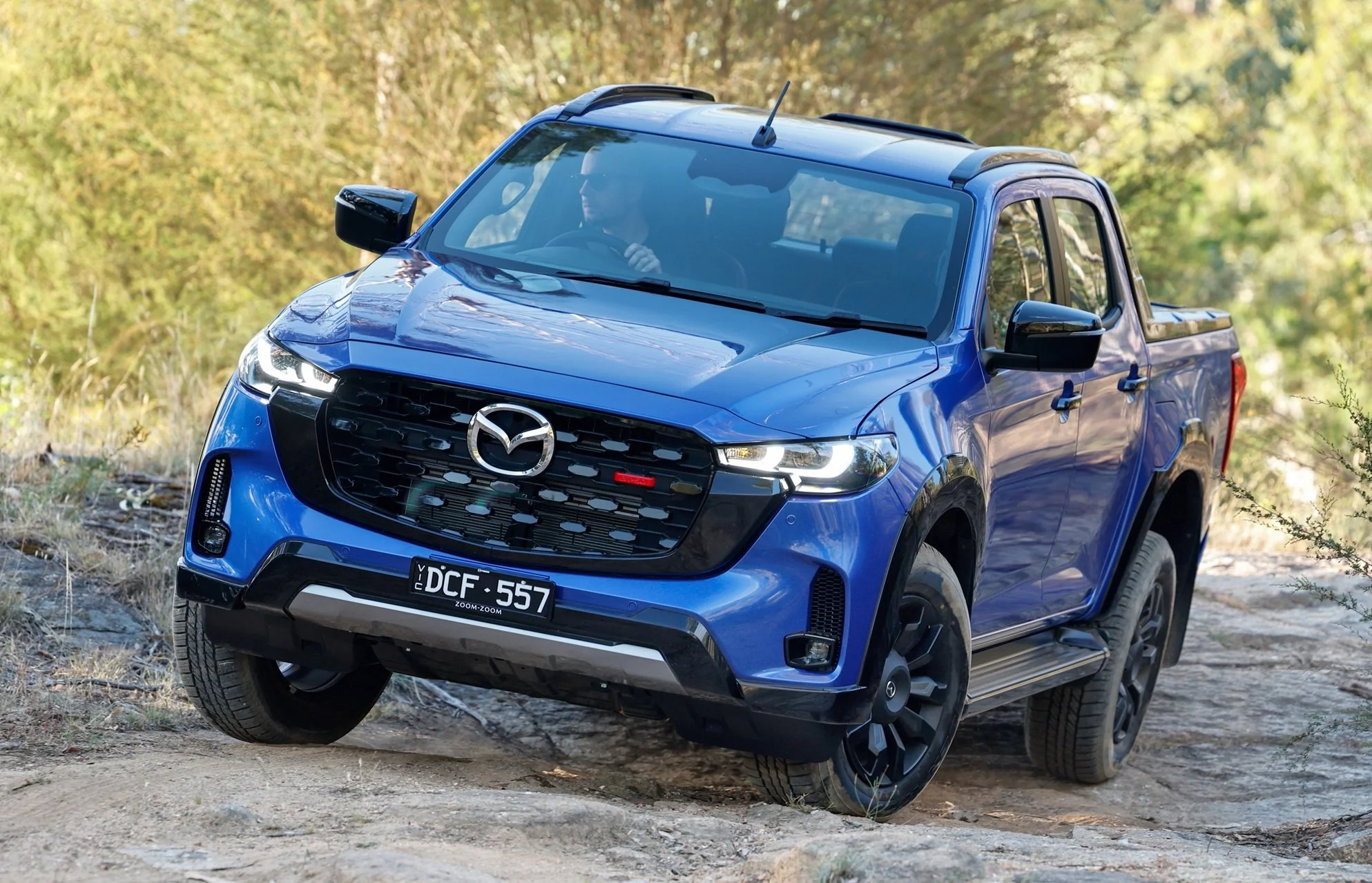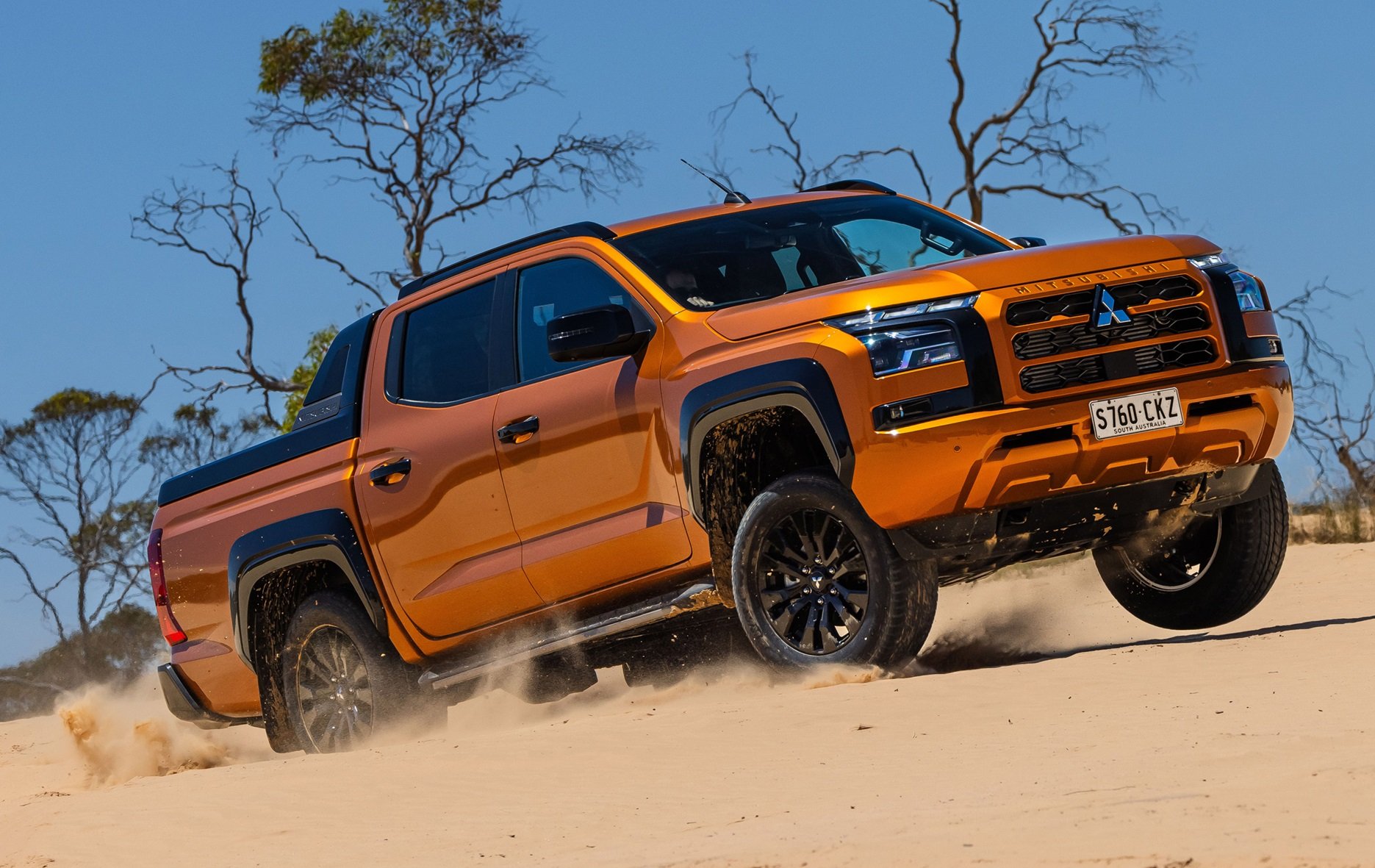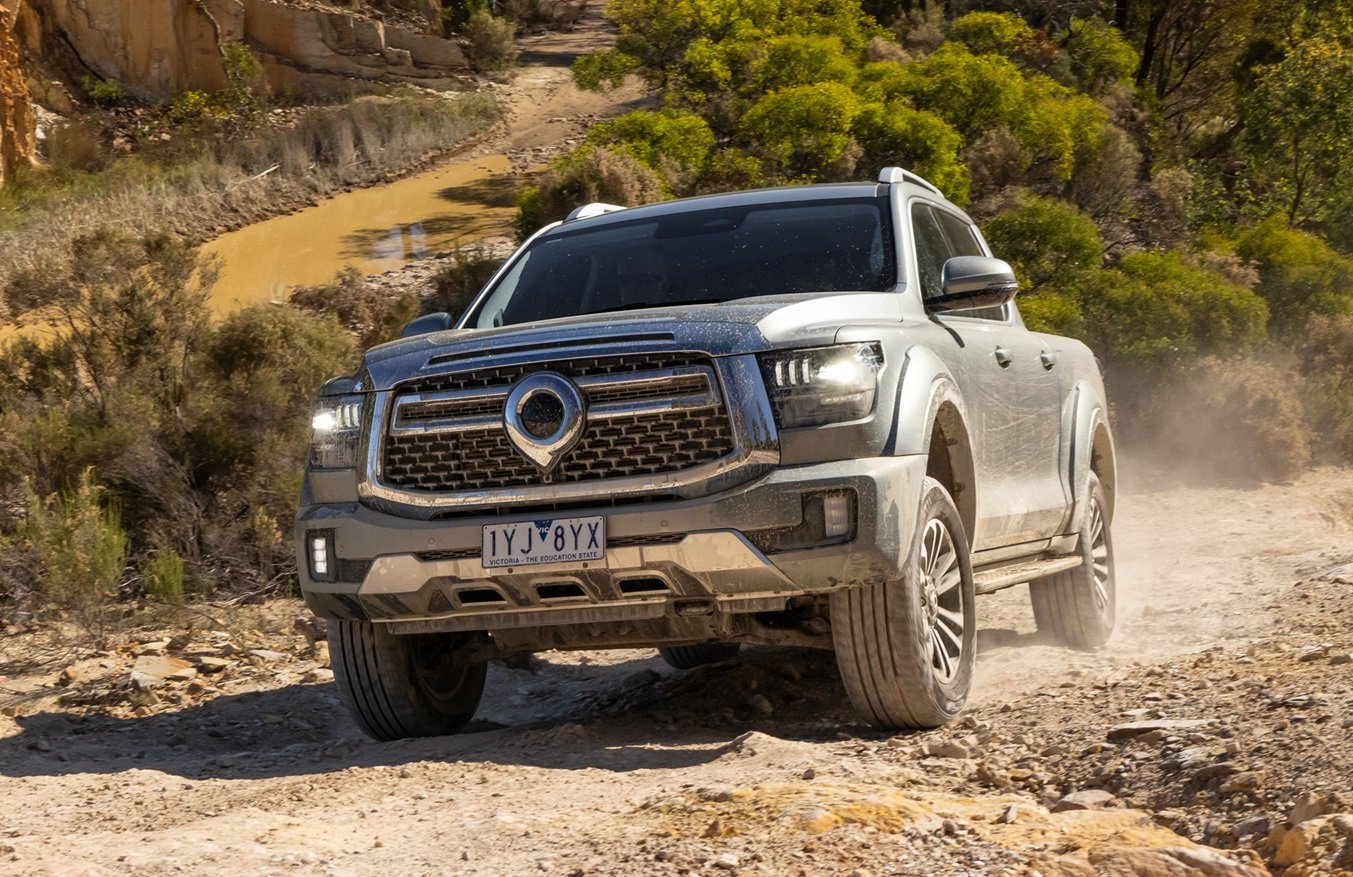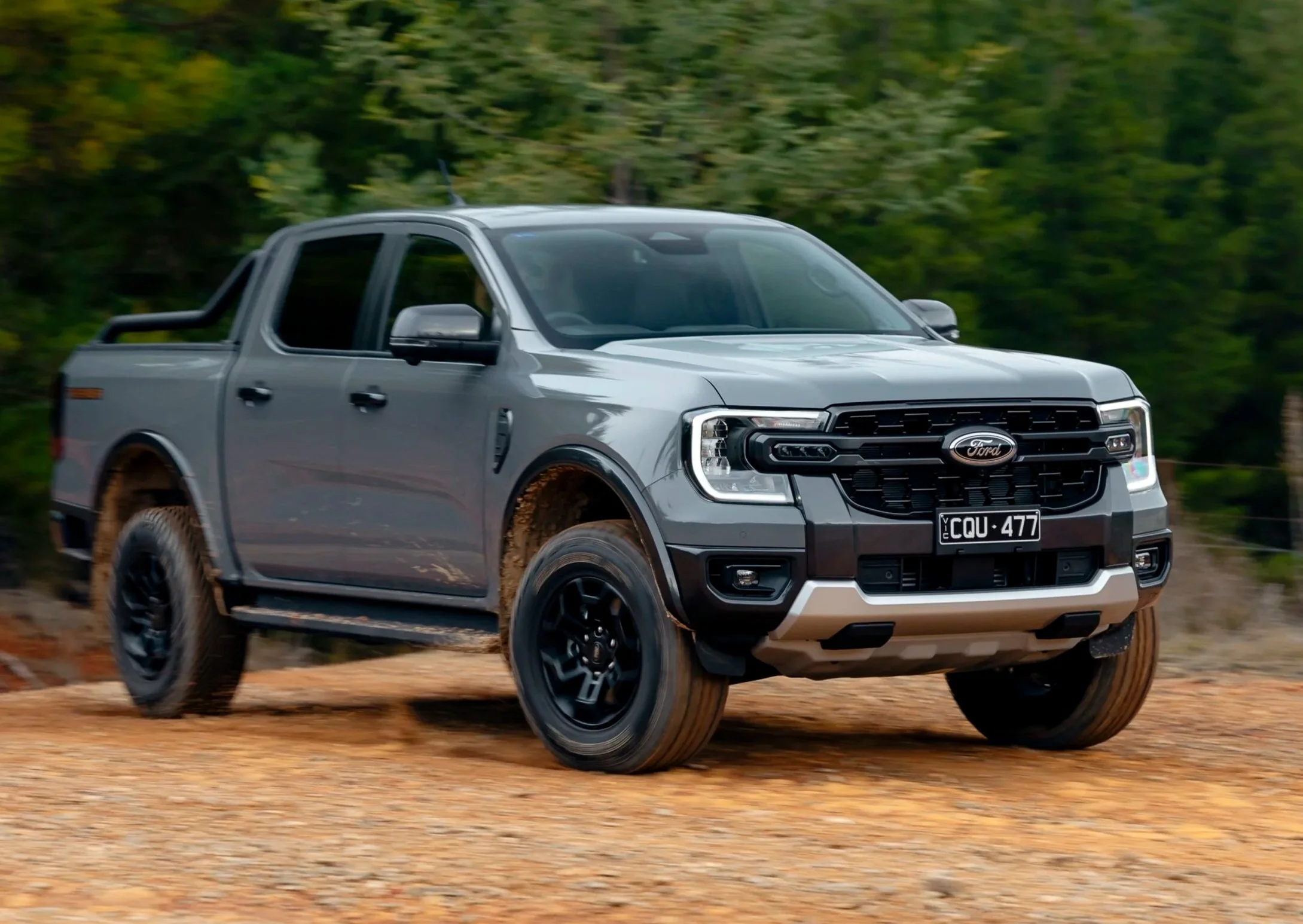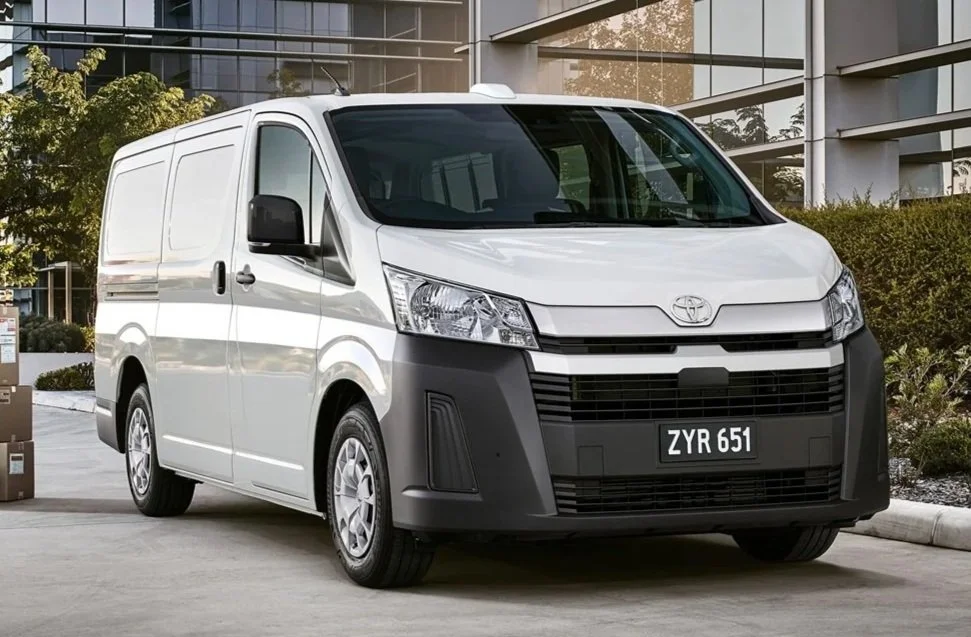
BEST UTES & VANS
Work or play in this segment - possibly both. Utes, in particular, have amazing popularity right now, with three of the top 10 sellers every month typically being a ute. Here, the lemons get a push to one side, and we reveal the real gems in both segments.
Review Summary
Reviews in brief
Ford Ranger
Ranger is the most popular vehicle in Australia. It drips with sex appeal and it’s the only mainstream ute with a big V6 diesel. (VW Amarok shares Ranger’s fundamentals, but the Ranger will be better to own due to poorer VW customer support.)
Ranger V6 is the one you buy if you want maximum platform performance. The V6 in XLT is a solid multi-purpose work vehicle and family conveyance, whereas the 2-litre turbo four seems highly strung. Go XLS if it’s a cheaper work-only second vehicle and comfort features aren’t a priority.
Ranger is a decent workhorse and a great tow platform, plus its off-road credentials are awesome. Ford isn’t the most reliable brand, nor is it the best at customer support, but at least Ranger resale value seems strong.
Stay well below 3.5-tonne towing limit for safety/stability, but expect strong performance, even when towing and/or carrying heavy loads.
Toyota Hilux
Hilux is hard to beat when it comes to resale value. Even old Hiluxes with high kays fetch good money in the used market.
SR is going to be the ideal workhorse. If you need to use the tray for tying down supplies or large pieces of equipment regularly, SR’s factory tiedown points are a great option over the smooth-sided tubs of higher model grades.
SR5 will be better suited for a more balanced life as both workhorse and family hauler including ‘premium cloth’ seats, sat-nav, LED lights, carpet, dual-zone A/C, 220-volt socket, 6 speakers, blindspot monitoring, rear parking sensors. But just remember utes are not comfortable long-distance because they’re a light commercial vehicle with leaf springs.
Adaptive cruise is standard, as is lane-keeping and speed-sign recognition. Ditto front air-con cooler box. Payload SR to SR5 is the same 940kg.
Mitsubishi Triton
The Triton remains the best value ute on the market. It’s about $10,000 cheaper than rivals like Hilux and Ranger. You’ll save five figures on a Triton GSR over Ranger Wildtrak and the 400kg gain in braked towing capacity has levelled the towing field.
Select II transmission continues, allowing 4WD activation below 100km/h and use of AWD (4H) on high-traction surfaces. This is great for well-maintained gravel roads, steep driveways, wet sealed roads, icy conditions, and tracks.
The 2.4 turbo-diesel is now more powerful thanks to now bi-turbo forced induction. Fuel economy should improve and the once conservative 3100kg towing capacity is up to 3500kg, but the macho towing arms race with other brands doesn’t mean you have to follow.
The improved wheelbase, chassis and tray design will make load carrying all the more competitive among the notionally bigger-name utes. Heavy duty suspension is also available for serious workhorse duties.
Kia Tasman
The Tasman is the first entirely new dual-cab ute to come from Kia Australia and offers one of the biggest trays in the segment and pricing in lower grades that’s very competitive.
It’s got the on-road all-wheel drive setting, it’s got the rear locking differential, it’s got the massive tray, a big towing capacity with integrated brake controller and it’s got a reliable turbo-diesel engine under the bonnet. Cabin quality and plushness for daily use with families on board is class leading.
Despite not quite having the macho power and torque figures of the V6 Ranger, the notionally ‘sporty’ GR Hilux or bi-turbo Mitsubishi Triton, the Kia Tasman does have a brilliant off-roading brain, capable of impressing even the most hardcore mountain climbers.
It’s also quite paunch in its kerb weight which makes for a very dynamically stable towing combination when you start pushing trailer weights close to or over 2.5 tonnes.
Mazda BT-50
BT-50 shares platform fundamentals with Isuzu D-Max, so if you’re expecting a wait on the D-Max, consider the Mazda instead.
If your ute will be used as more of a personal transport vehicle, perhaps only occasionally roughing it in hard-to-access places or in unpredictable circumstances, a BT-50 will offer a decent place to sit in for hours on end with multiple people on board.
It’ll also double as a very comfy suburban-dwelling family transport for weekend adventuring. Good towing platform with a 3500kg braked limit. Choose 4x2 for max payload. If you need heated seats for cold early starts, you need GT 4x4 spec.
You can save $3000 choosing manual over auto, but you’ll lose software-based safety tech that relies on an auto transmission.
GWM Cannon
The GWM Cannon absolutely needs to be on your shortlist if you’re shopping for an extremely good value, functional dual-cab ute with a grunty diesel engine and a cabin that feels better appointed than more expensive rivals.
With a firm place in the top 10 carmakers by sales in Australia, GWM has earned its stripes having been selling cars here for 16 years. Sales have increased by 10 times in just the last 5 years alone and there are now over 200,000 vehicles on the road right now proving their reliability.
You get a 2.4-litre turbo-diesel 4-cylinder engine that makes 135kW and 480Nm of torque, which is plenty for towing, carrying and touring/off-roading. The back seat is more than good enough for apprentices, the cabin has plenty of equipment, and the 4X4 system is good enough to get you out of any soggy building site.
A range of powertrain types are available, too: diesel, hybrid and plug-in hybrid, and the hybrids are similarly as affordable as the diesel.
ABOUT THIS NEXT RECOMMENDATION (TRITON, HILUX & BT-50’s COMPETITOR)
This next ute is in a sub-set I don’t specifically recommend due to the questionable parent brand being below-par at customer support. But it is a justifiable option if it fits a specific usage case, such as heavy towing, or if you just need what’s immediately available.
Bear in mind, it’s not especially terrible, but you need to know about the lacklustre reliability and/or poor support that might disappoint/frustrate you over the first several years of ownership. Here it is…
Isuzu D-MAX
A good alternative if you can’t get hold of a Mazda BT-50 in a timely fashion, but it’s more often D-Max that has the availability issues, currently.
As a ute to punish, the SX base model or LS-M are pretty good options for a dual-cab. Decent ‘apprentice’ conveyance.
The 3.0 inline four diesel is as old as the hills and will take what even the most mechanically unsympathetic tradie can do to it. Isuzu Ute’s main deficit isn’t reliability - it’s mainly lacking on the customer care front.
Resale value is reasonable, payload is a very respectable 1070kg (but that reduces with the more equipment you add up the model range), and the 4x4 system will get you out of the soggiest housing estate.
Good level of standard safety gear includes knee and front-centre airbags, lane-keeping, distraction warning, blindspot monitor, rear sensors, auto emergency braking, auto LED headlights & foggies, auto wipers and radar cruise - but no tyre pressure monitoring until LS-U model grade.
VANS
Hyundai Staria-Load
Staria-Load offers tradies all the hard yakka of a ute, but with the wisdom of keeping cargo out of the rain, with greater security. You get an abundance of space (the kind of space ute buyers are constantly trying to invent). There are eight tie-down loops fitted to the floor.
The full-height rear hatch doubles as a giant makeshift awning during random showers on-site - the kind which don’t warrant tools-down.
The frugal, powerful 2.2 turbo-diesel will move up to 1078kg of payload in top-spec Premium, which also gets wireless phone charging and 17-inch alloys. You can even put up to 100kg on the roof.
If you factor in 2500kg of braked towing capacity (with 100kg of towball download), including the ‘Crew Van’ option that gives you seating for five, you’ve got a multi-role trade- and delivery-friendly package.
Toyota Hiace
The most popular van model in Ausrtalia didn’t get to selling four times to one of its nearest rivals by being unreliable or impractical.
Hiace is the highest seller in light commercial vans because it does virtually every job okay. It’s not the best at some things and is poor at others, but that’s why you need to be careful picking the right van.
But how can you test five or six vans soon enough to make a thorough assessment? Ford Transit beats Hiace on towing and payload, but Hiace has better resale value. Staria-Load beats Hiace on cargo volume, while Hiace is better looking.
Hiace comes in long wheelbase, super long wheelbase, 5-seat crew variant and commuter bus. Decent payload, good towing and plenty of door clearance - with an optional barn door option at the back.
Utes & vans to avoid
Nissan Navara: A new Navara is due around 2025, to be based on new Triton, only you’ll be dealing with Nissan. Current Navara is burdened by soft-duty coil springs at the rear which are compromised when it comes to heavy loads, towing and safe handling in these situations.
Volkswagen Amarok: New Amarok is a Ford Ranger clone, which is only good if you cannot get your hands on the genuine article, and/or if you specifically want to pay more for the same basic vehicle platform. Unfortunately, VW customer care is abysmal, so they’ll burn your trust.
SsangYong Musso: This is SsangYong’s fifth or sixth attempt to establish itself in the Australian market, meaning you could be one of 1580 people who bought a Musso in first-half 2023 and within three years the brand could go belly-up again. Where do you go for tech support, parts or servicing?
LDV T60: Sales for T60 are growing, but the key issue here is LDV itself. Too many questions about serious concerns of poor build quality exist, evidence by some poor so-called customer support. Utes need to take a beating; you can’t be in the dealership fighting claims for rust repair.
Jeep Gladiator: As well as being hideously expensive at over $100K per unit, Jeep’s reliability is trash and the brand’s opinion of you as a consumer is generally worse - especially when you need support or genuine parts that aren’t extortionately overpriced. Give this glorified Wrangler a miss.
Save cash, and slash stress: We'll help you purchase any new car. Enquire below - there's no obligation.
ENQUIRE NOW
..
Thinking of buying a base-model new ute?
This video will tell you everything you need to know about that
About new Chinese utes
There are three distinct types of Chinese-brand utes which you should take into consideration. But be aware that these utes are not simply cut-price Ford Ranger, Toyota Hilux or Mitsubishi Triton equivalents. Most lack the ride and handling tune, the long-term reliability and pedigree, and most lack the same levels of power and performance.
Established
There are the established Chinese brands which have been here for many years and have a solid commercial presence:
GWM Cannon: (a brand well and truly inside the top 10 brands these days). GWM has over 200,000 sales and been doing so for over 15 years as China’s largest carmaker. The Cannon has been on sale for years now and has proven quite reliable and very affordable, even if lacking grunt to compete with the Japanese-branded (but Thai built) utes for towing and big payloads. The Cannon Alpha hybrid and Alpha PHEV (plug-in hybrid) look set to change that underpowered notion.
Click here for more on GWM Cannon (diesel) >>
MG U9: MG got settled here in back in early 2017 and has only improved its sales figures since, they’re now on their second generation of cars. The U9 hasn’t arrived, but when it does, it’ll be unlikely to fail given the popularity of MG’s ZS small SUV, the HS midsize and the new QS 7-seat SUV. Decent build quality, good customer support and high value proposition will be MG’s strong suits for a dual-cab ute.
KGM Musso: (nee SsangYong) Korean, not Chinese, but we’ll ignore that for now - they’re improving and have been in Australia for many years. The fact is the Musso does offer great low-cost dual-cab ute practicality that is competitive. They just struggle to gain sales momentum; but it’s not for a lack of trying. KGM maintains its head office here in Australia rather than outsource to an importer, refuses to give up on the Australian market and manages about 5000 sales every year, which is not bad.
Click here for more on KGM SsangYong Musso >>
LDV T60: LDV began its commercial efforts here in 2017 and made the right choice starting with a dual-cab ute that today sells about 6000 units annually, which is decent. However, they say their localisation efforts to improve product quality is in the works (after getting busted for premature corrosion in the Timothy Rigby case), so maybe wait another two years for their improved T60 - unless you just need something cheap to thrash.
Mahindra Pik-up: Mahindra has actually been in Australia for donkey’s years. They’ve just sold almost exclusively in Queensland for some reason. In the past they paid legendary Aussie wicketkeeper Matthew Hayden to be their ambassador and they’ve recently updated the Pik-Up. It’s an Indian-built copycat of the LandCruiser 79 Series with all the stagnant innovation and technology of the Toyota, only with a different badge. In case you missed it, India has a space program now and they’re a motorcycle manufacturing powerhouse. Not a bad option if you just need a cheap farm truck to throw stuff in and you’re not fussed about frivolities like heated leather seats or sporty interiors.
These brands are a known entity here in Australia with proven sales success and decent dealer network footprint, meaning they’re not questionable in terms of maintaining customer aftersales and dealer technical support, honouring warranties, and onshore parts inventory. They’re just not as good as the bigger, better-known models like Ranger, Hilux and Triton.
Unknown
Unknown brands are the ones to watch over the next couple of years. These are brands that have arrived within the last five years or so but have questionable reputations at this point, either for their corporate conduct, build quality and reliability, or simply for their lack of commercial stability like not many dealers, low sales volumes or just minimal consumer traction. Or, we simply know nothing about these brands because they’re so new.
BYD Shark 6: If you dial down the buzz and hype, the Shark 6 is only a year old and we know almost nothing about its long-term reliability. BYD has also been in hot water, so to speak, about its conduct toward motoring media that expose its underhanded conduct or express unfavourable opinions about its products. It promises more power than a V6 Ford Ranger Raptor, but the Ranger has proven itself. The Shark 6 is also pretty poor off-road due to the fact it has no low-range gearbox, so it struggles up steep hills while also not driving the wheels with its petrol engine at all.
Chery: It doesn’t have a ute yet, but there is one in development codenamed KP11. It looks remarkably similar to a cross between Ford Ranger and an Isuzu D-Max, but there are rumours it’ll come with a hybrid 1.5 turbo-petrol powertrain instead of diesel. Chery itself has also tried and failed in Australia once before - there’s every chance it could repeat history. Certainly it has more momentum this time around with sales very close to cracking the top 10 before the end of 2025. The advice here is wait and see if their ute is any good.
JAC T9: A very new brand with only one product with questionable build quality, selling less than 1500 units in a year. JAC only arrived in late 2024 and it’s yet to prove the T9 is anything more than a cheap, Chinese ute. The main issue here is that buying such a new ute from such a new brand, one that could easily commercially fail, could leave you scrambling to find parts in a few years in the event the local importers drop the brand entirely. JAC dealers also aren’t exactly in an adundance, so getting help in regional areas is going to be a struggle.
Foton Tunland: Another unknown brand with no runs on the board: tiny dealer network, untold reliability history, unproven track record of supporting customers with technical issues and a low price that is designed to reel you away from established brands with more evidenced histories.
Geely Riddara: So new it isn’t even here yet. It’s best to wait until it actually arrives, wait for others to be the lab rats in the experiement by going first, and see if the brand gains any traction.
QUESTION FROM A PROSPECTIVE ‘CHEAP UTE’ BUYER
This question came in from a guy named Geoff who’s doing his research on which of the cheap dual-cab utes might be the safest bet given he’s on a budget and needs a dependable vehicle.
Geoff says: “We have sat in a few mainstream Japanese dual cab utes, but only the top-spec ones seem to be comfortable enough. And in my opinion, $60k+ is an outrageous price for any ute. The three vehicles I'm interested in have a top-spec of around $40k. I currently drive a 20 year old Commodore that has done 400,000kms and the mechanic says that it will need to be replaced soon.”
OK, so, up-front, I need to admit that my crystal ball is down for repairs, which limits my ability to predict the future. Frankly not enough data is known about any of these three to make any kind of credible prediction about longevity, but I am fairly confident the resale value will tank if you buy one.
Ssangyong has been in and out of bankruptcy for some time, and it has failed in Australia several times. It’s currently enthusiastically re-branding to KG Mobility to wash all of this ugliness away. This would weigh heavily on my decision to buy one. Essentially, this instability means budgets globally have been slashed for some time, and this is not a positive thing for the product, or the calibre of support you are likely to receive if you have a problem.
GWM has failed spectacularly to gain any real traction here for something like 10 years, but recently their sales here have increased. They were founded in 1984, and they’re currently China’s largest manufacturer of SUVs and utes.
LDV has had a spectacular increase in sales in Australia, however.
Check out my video report below on one customer who took LDV to court (and won) after they refused to repair his T60 rustbucket, because he worked at a surf club. Their quaint hypothesis was that proximity to the ocean was the customer’s problem… The court saw it differently, ultimately, but for the owner it was a stressful roll of the dice. One of the big problems with LDV ownership is the importer (a company you’ve probably never heard of, called Ateco). Ateco is not renowned for its commitment to customer care. Quite the opposite in the case of Timothy Rigby >>
You have to understand that the unique selling proposition of all three is: They’re cheap. And cheap products tend not to be as good as the expensive ones, right? So there’s a trade-off, and it’s likely to be in the areas of reliability, longevity, etc.
That’s how I see this playing out. If your cheapie dies at about 14 years and a Japanese ute runs to 20 - the amortised cost per year is about the same.
Do not buy one of these cheapies expecting it to be the same as a ‘Japanese’ ute (in quotes because they’re all built in Thailand…) Incredibly, people do - they expect it to be the same high-quality product as a Toyota or a Mitsubishi, only cheaper. This is emphatically not the case. If you go into this expecting to thrash it for five years, on a farm or mine site, killing it in the process and throwing it away afterwards, OK. Good plan.



